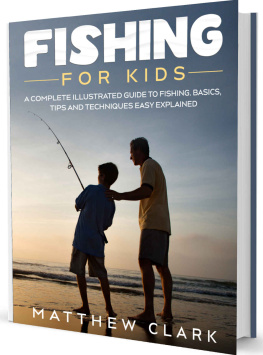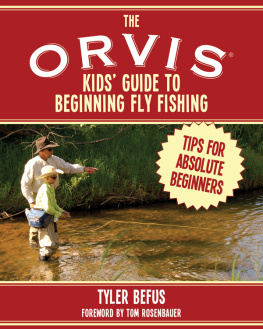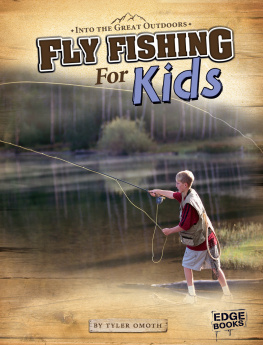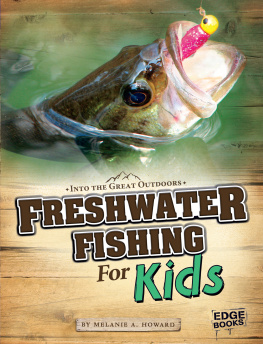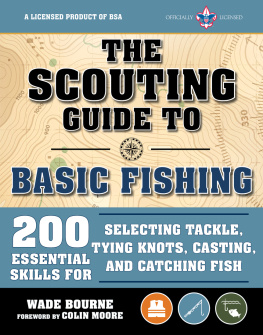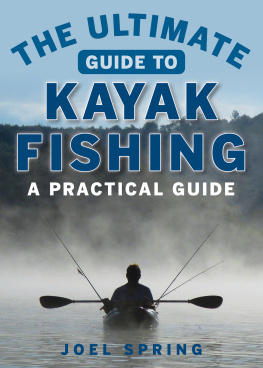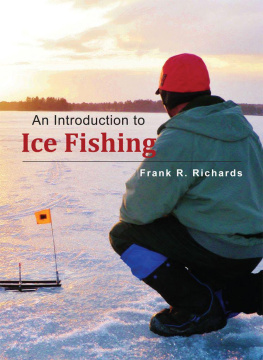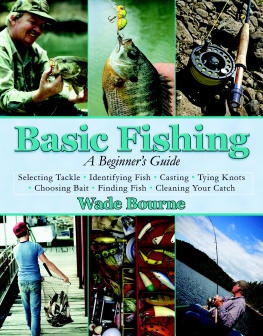Matthew Clark
Fishing
for Kids and Beginners
A Complete Illustrated Guide to Fishing.
Basics, Tips, Techniques, Easy explained.
Cright 2021 ublihing.
All right rrvd.
Author: Matthew Clark
N part f thi ublitin m be rrdud, ditributd or transmitted in n frm or by any mn, including hting rrding r other electronic r mhnil mthd or b n infrmtin trg and rtrivl tm without th prior writtn permission of the ublihr, xt in th case f brif uttin mbdi in ritil reviews and rtin other nn-mmril u rmittd b right lw.
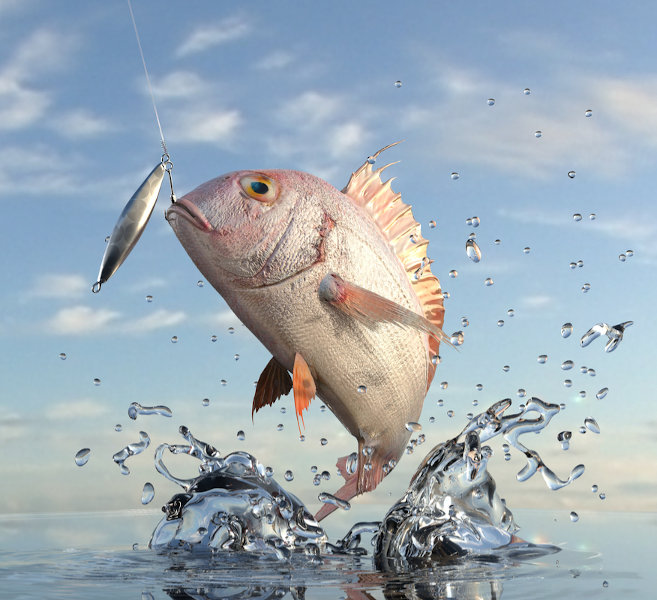
Table of Contents
Introduction
Fishing is one of the best ways of relaxing and spending time with your kid, while he or she learns a thing or two. If done right, your kid will fall in love with the exercise so much that he will want to fish whenever a chance presents itself. Many people who enjoy the sport believe that, fishing entails more than just trapping fish. It has both an accomplishment and patience aspect: traits that are desirable not only in adults, but also in kids. If you have ever been interested in knowing what kids need to know about fishing to get started, then read on.
What should your kids know about fishing to get started?
Fishing is more of an adventure
Let your kid understand that you are going out to have fun and that they are not restricted to just fishing. Depending on how old he/she is, you should allow him or her to wade in the water, catch frogs, skip stones, play ball, float sticks and so on. Make it fun for your kid so that he will want to go fishing again in future. You can also let him bring friends, but not too many.
Go where there are plenty of easy to catch fish
Make your child understands that, if he wants to catch fish, he should go where the fish are. Bluegill and Sunfish are the best for young children. These fish are usually cooperative and easily reachable along the shoreline. They may be small, but that is not a problem. The most important thing is to catch fish.
It is okay to make mistakes
Be patient with your kid(s). Make sure that you have enough time to fish without distractions. It is okay if they make mistakes in the process of learning. If they do, laugh with them and keep encouraging them to learn as they have fun.
Explain to them the importance of being safe
Make your child understand that he or she should wear a life jacket whether he or she is on the boat, shore, or dock. You should also avoid steep banks. It is advisable to use barbless hooks instead of the ordinary hooks this keeps the incidences of having hooks stuck in the tender skin to a minimum.
You can also practice casting with your child in the backyard before going fishing. You can use Practice Casting plugs since they do not have hooks and work perfectly in the backyard. Practice makes a big difference when it comes to baiting the fish.
Teach them how to use fishing equipment
Make sure that the rod and reel fit your childs hands. Shorter rods 4 to 5 feet long with smaller reels are much more comfortable. An adult-sized rod and reel can frustrate your child because it may be too difficult to use. You should also use bobbers since they are not only fun to watch, they also show if you are getting a bite. A little tackle box is also a good way to encourage your child to keep his or her fishing gear in an organized manner.
Encourage them to use live bait
Earthworms are the ideal baits for a first-timer. They are not only easy to hook, but also ideal for catching fish in lakes, ponds and streams. You can buy them in bait shops or simply dig them up in your garden. Mealworms and minnows are the best. Artificial baits are more effective if used after gaining some fishing experience.
Help your child cast
Upon reaching the local lake, look for the area that has ample room to cast and a bank that has a gentle slope. You can find Sunfish along the shorelines. After baiting the hook, rest the bobber on the line on top of the hook. This varies depending on the water depth; however, a depth of 18 to 24 inches is just fine. Help your kid(s) cast and then take time to observe the bobber. Let it rest for some time, then reel it a little further and, again, let it rest for some time.
If you catch fish, you have two choices; you can store it in your ice chest and fry it afterwards, kids love the taste of a freshly caught fish; or release the catch. You should minimize the time the fish is out of the water if your intention is to release it. Also, exercise caution while removing the hook. Let your child admire the fish the entire time. Knowledge of your areas fishing regulations is also important.
Make it a short exercise
Do not expect your child to enjoy fishing for more than two hours if it is his or her first time. An hour or two is enough fishing time. Afterwards, you can enjoy an outdoor activity together, for example, a picnic or play ball. It is important to remember that spending time enjoying the outdoors is your main objective.
The Take Away
Fishing is a fun, outdoor activity. Safely introducing your kid(s) to the sport is an important part of both your lives: you will both reminisce the good times you had outdoors together. The above guide is a manual on what kids need to know about fishing to get started; you can always refer to it whenever you want to take your kid(s) fishing.
Basics of Fishing
Dropping a line in the water might seem pretty simple. To do this, you need a fishing rod, reel, bait, and some lures. If you are using bait, then you need to tie a simple rig of a little hook to a small sinker that helps to drop the bait into the water where the fish can bite.
A Uni Knot
If you dont know how to tie a basic knot, then you need to learn to tie fishing knots to attach the rigs and tie the hooks. The more you practice, the easier it becomes. In this section, you will learn about tying a simple uni knot that you can teach the kids when you take them fishing.
The uni knot is one of the most basic fishing knots and it is easy to learn. It is quite strong as well. Do you know how to tie shoelaces? If yes, then this is a very simple knot to master. There are four simple steps that you need to follow.
The first step is to take the hook and run a line through the eye of the hook and then double back to create a loop by letting the tag end over the double fishing line.
Now, you must wrap the tag end around the double line by going through the loop you created in the previous step.
You need to repeat this process six times to strengthen the knot.
Once you do this, you need to moisten the line and then pull the main line to tighten the knot.
If you arent aware of what the tag end is, then it is the end of the line. You must always moisten the line to prevent any friction; it also prevents the knot from sliding along the line. You can wet the line by putting the knot in your mouth. You must also cut away any extra tagline thats there but never cut it too close to the knot. If you cut it too close to the knot, the knot will slide away.
Running Sinker Rig
You can use a running sinker rig to catch a wide array of fish in estuaries and even deep water. It is quite reliable and simple to make.
You need about a meter of the trace line or you can even use the main line if you dont have any trace line. Now, ask the child to tie a hook on one end and a swivel on the other end with the help of a uni knot.
Now, the child needs to thread a ball sinker through the main line and use a uni knot to join it to the other end of the swivel.
Set up Rod and Reel
You need to teach the child to set up the rod and the reel if you want to teach the child to fish. To set up the rod, the child needs to thread the line from the reel through the eyelets present on the rod and then pull it through so that a swivel, hook, or a clip can be attached to the end of the line. The hook and the sinker arrangement or anything else that you place at the end of the line is known as a rig. There are various types of rigs available and the one that you select will depend on the type of fish you want to catch and where you are fishing. You will need a small hook and sinker if you are taking your children fishing in calm water, whereas a big sinker and hook are essential if you are beach fishing.
Next page
